Equilibrium – finding it and losing it to sell your animated action.
by
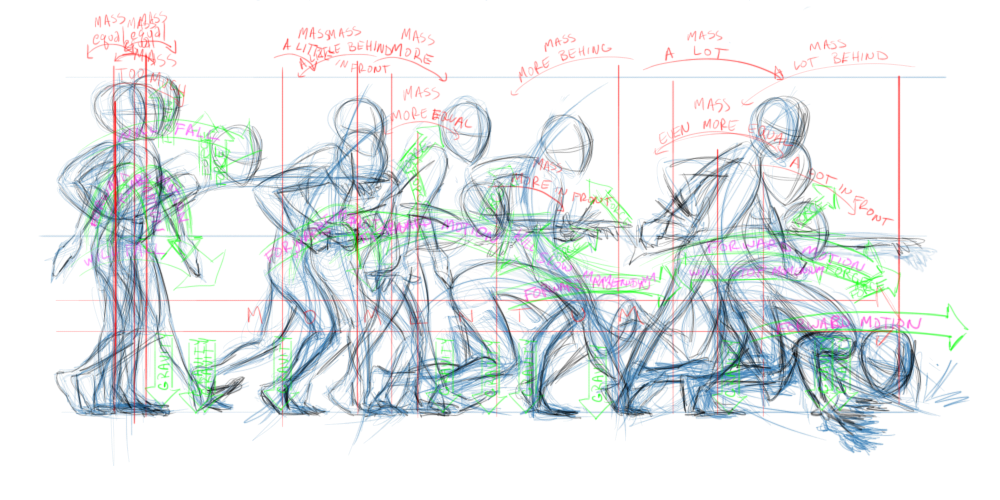
“Equilibrium: a state in which opposing forces or actions are balanced so that one is not stronger or greater than the other”
There are three elemental things that I am always thinking about while animating basic action or acting: force, mass, and gravity.
My own layman’s definitions.
Gravity is itself a force, I know, but I separate it in my mind for a reason. Gravity is purely external. That is to say it is a force that is not produced by my characters, or any other mechanical device in the scene. It is often in competition with bodily forces, but we also find ways to work with it, especially to create locomotion (walking, running, crawling, hopping, whatever.) So, I like to keep it’s influence in my animation as something separate from all other factors.
Force is something I define as “ the energy produced by the characters’s body, or by an external object or element, that creates movement.” This energy can manifest itself as propulsive (creating directional movement; the “take off”) or resistive (stopping directional movement; “putting on the brakes”). The body’s muscles, a machine’s mechanical parts, or an element of nature can be the origin of the force, but this energy is almost always defined by how it interacts with gravity (unless of course I am animating a character floating in space, which could happen.)
Mass is the size, density and weight of the object or character being animated. It should be obvious why this is an important quality to communicate. I have specific ideas about how weight, and how your character carries their own, is an important part of my animated story. But I’ll write about that later. Suffice it to say that mass is important to communicate, and that it’s relationship to force and gravity at all times in my scene always crucial no matter what style you are animating in.
To control, or not to control?
So why am I talking about these things? Well, it struck me during a talk this week, that the word “equilibrium” is key to making mechanics decisions at every moment of an animated shot. More specifically, I think about whether or not my character is trying to create an equilibrium (to stop movement), or upset an equilibrium (to cause movement).
I also find myself asking the question: “Is my character in control of their body, or out of control?” The level of physical control can so clearly communicate not only the force of their actions, but those forceful actions, and how much control my character has over the physical effects of those actions, says just as much about their emotional state as any facial expression or pose.
I think about this in terms of balance too. Is my character balanced and steady at a particular moment (not a lot of sway or stagger)? Or are they out of balance (visible sway while standing or moving)?
These animation decisions give my audience, I think, another more subconscious cue in determining how they think the character feels. And in that regard, anything you can do to help create a connection you should use.
Mass Locomotion.
But what really got me thinking of this was the basic explanation of running, walking, jumping and other simple physical actions. All of these kinds of motion have foundational mechanical qualities that help us recognize each of them. But they also have (as all things do, really) an emotional element too. In order to take advantage of both elements in my character’s body mechanics, I feel I need to be constantly thinking about the relationship between force, mass and gravity at all times – and really push these ideas to get the emotional impact I want.
For instance, in a typical walk we are continuously falling and catching ourselves. We are changing the shape of our body ever so slightly to allow our center of mass to go in front of our feet. That causes us to slowly begin “tipping over” in the direction we intend on traveling. If we continue to do this over and over in a consistent manner, we achieve typical walking. If we begin to find ways to send more mass over the “tipping point” more quickly, our walk can pick up speed, and, I would argue, pick up emotion. We are purposely upsetting the equilibrium between mass and gravity to create forward locomotion (with a little bit of force in there from our feet, swinging arms, etc.)
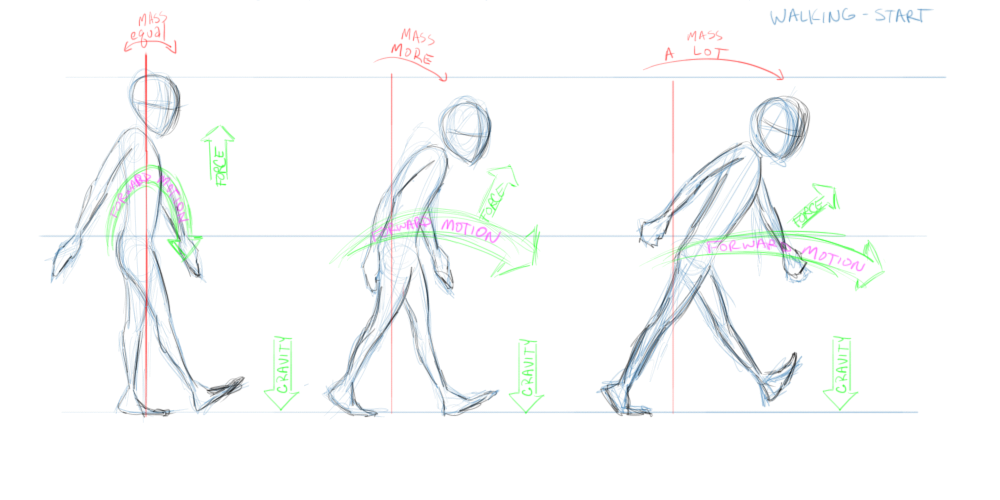
Conversely, if we try to come to a stop, it becomes necessary to try to recreate an equilibrium by shifting the center of mass away from the direction of movement, literally setting up the conditions for the reverse of that movement, in order to tip the scales for a bit until we come to a stop and we can eventually stand straight and balanced on both feet.
Let’s look at these opposite actions in a run. The amount of force I would like to create as my character “takes off” on a run depends on how powerfully I portray their preparation. How much force am I building up in their legs? What is the relationship of their body mass to gravity and the center of balance? Will the combination of these things create the path of motion and acceleration I am looking for? I judge these things by reading the line of action in the body, and averaging the direction of force with the pull of gravity on their particular body mass. It sounds way more analytical and mathematical than it really is. This really can all come from observation and experience, but it’s a good thing to know what I am looking at and be able to create simple tools from it to use as I create animated actions of any sort.
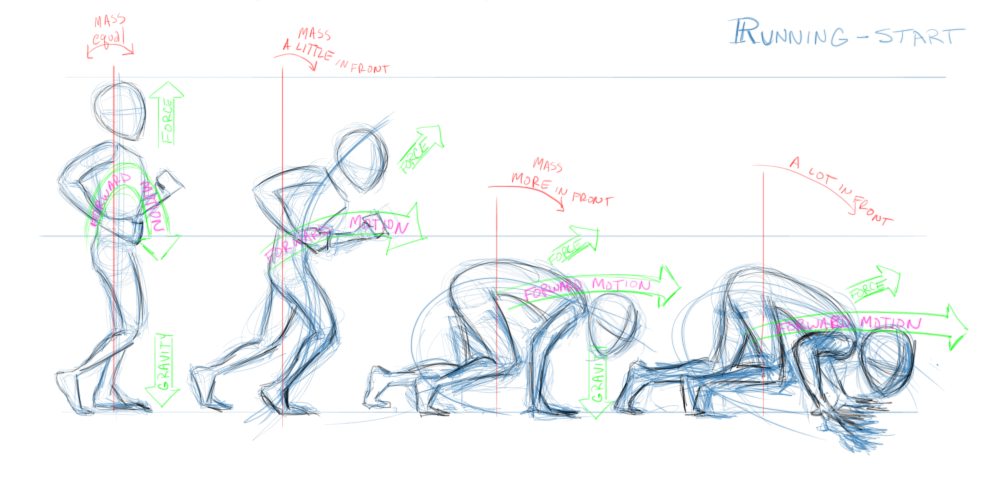
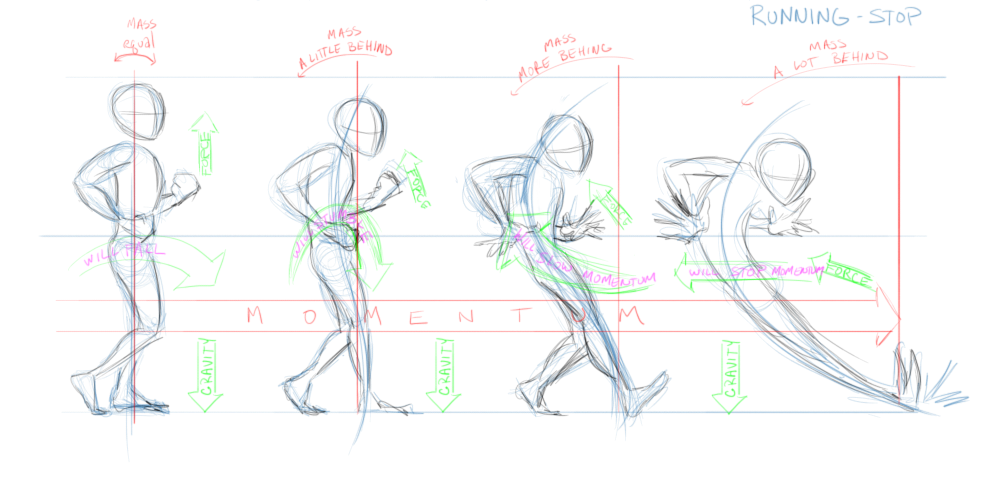
Something as simple as a reach, while not in motion, is still subject to the relationship between some small force, the character’s center of mass, and gravity. If not, they could look really foolish – which may, of course, be what I am going for, a stumble or even a pratfall, so by all means I’ll “upset” that equilibrium as much as I can get away with.
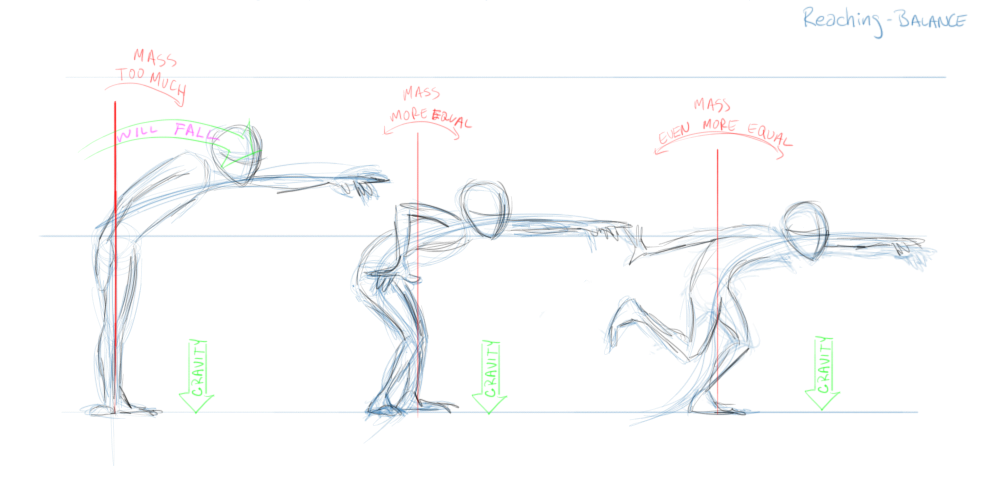
The simple question.
So that’s my thought of the week. Or word of the week. Or whatever. Equilibrium. Does my character need to create it or upset it to achieve their intent from moment to moment. Are they “in control” or “out of control”, and can you use that physical communication to enhance the story you are telling. I’m going to write about these last two questions in a later post, so stay tuned.
A couple of podcasts coming soon, so stay extra tuned!
See ya.
/ken

